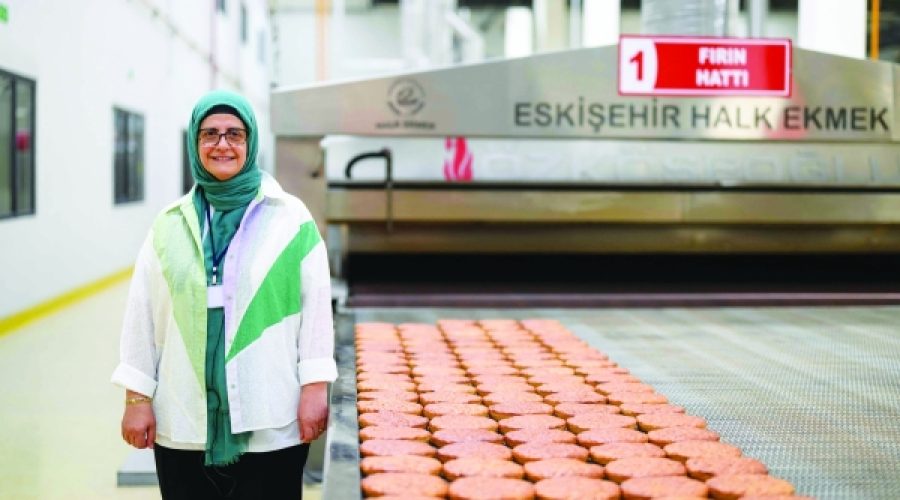Revolutionizing the Bakery Industry: Turkey’s 5,000-Year-Old Bread Recipe and Its Potential Impact on Food Entrepreneurs
In the early Bronze Age, a loaf of bread was interred beneath the threshold of a newly constructed house in what is now central Turkey. Over 5,000 years later, archaeologists have uncovered this ancient artifact and collaborated with a local bakery to recreate its recipe, igniting enthusiasm among customers who are eager to purchase it.
Discovered at Kulluoba, near the central Anatolian city of Eskisehir, the bread measures 12 centimeters (five inches) in diameter and retains its distinctive shape. “This is the oldest baked bread found during excavations, and it has remarkably preserved its form,” stated Murat Turkteki, the archaeologist leading the dig.
“Typically, we find only crumbs in such excavations, making this an exceptional find,” he commented to AFP. The charred bread, which dates to approximately 3,300 BC, was buried beneath the entrance of the dwelling. A piece had been partially removed before being combusted and then buried when the house was constructed. “This suggests a ritual of abundance,” Turkteki reflected.
Unearthed in September 2024, the charred loaf is now on display at the Eskisehir Archaeological Museum. Ayse Unluce, the city’s mayor, expressed her excitement over the discovery, pondering the feasibility of reproducing the bread.
Investigative analysis determined that the bread was made from coarsely ground emmer flour—an ancient wheat variety—and lentil seeds, with an unidentified plant leaf serving as yeast. Ancient emmer seeds are now extinct in Turkey.
To closely replicate the original recipe, the municipality opted to use Kavilca wheat, which resembles ancient emmer, along with bulgur and lentils. At the Halk Ekmek bakery, a municipal initiative aimed at providing affordable bread, artisans hand-shape 300 loaves of Kulluoba daily. Bakery manager Serap Guler noted, “The combination of ancestral wheat flour, lentils, and bulgur produces a rich, satisfying, low-gluten, and preservative-free loaf.” The initial batch of Kulluoba loaves, weighing 300 grams (11 ounces) and priced at 50 Turkish lira (approximately $1.28), sold out within hours. “I hurried to buy some, fearing they would be gone. I’m curious about the taste of this ancient bread,” remarked customer Suzan Kuru.
The Kulluoba civilization, which lacks written records, remains largely a mystery. During the Bronze Age, the Hattians—an Anatolian people who predated the Hittites—occupied the Eskisehir region. Archaeologist Deniz Sari described Kulluoba as a medium-sized urban settlement engaged in trade, crafts, agriculture, and mining, highlighting its structured familial and social order.
This rediscovery has renewed interest in cultivating ancient wheat varieties better suited to drought conditions, particularly as the Eskisehir province, once rich in water sources, now faces significant water shortages. Mayor Unluce emphasized, “We are experiencing a climate crisis, yet we continue to grow water-intensive crops like corn and sunflowers.” She noted that the wisdom of ancestors advocates for a shift towards less water-demanding crops.
The mayor aims to revive Kavilca wheat cultivation in the region, which is resilient to drought and disease. “Implementing strong policies in favor of this shift is essential. Embracing ancient wheat cultivation will be a symbolic step forward,” she stated. “This bread has endured for 5,000 years, and we have a responsibility to protect and pass on this heritage.”
Special Analysis by Omanet | Navigate Oman’s Market
The discovery and recreation of 5,000-year-old bread in Turkey highlights a unique opportunity for Omani businesses to innovate by integrating traditional food concepts with modern consumer preferences. This trend could open doors for agricultural ventures focused on drought-resistant crops, appealing to environmentally-conscious demographics. Smart investors should explore partnerships in culinary heritage and sustainable agriculture, positioning themselves in a niche market that honors past traditions while addressing contemporary challenges.



